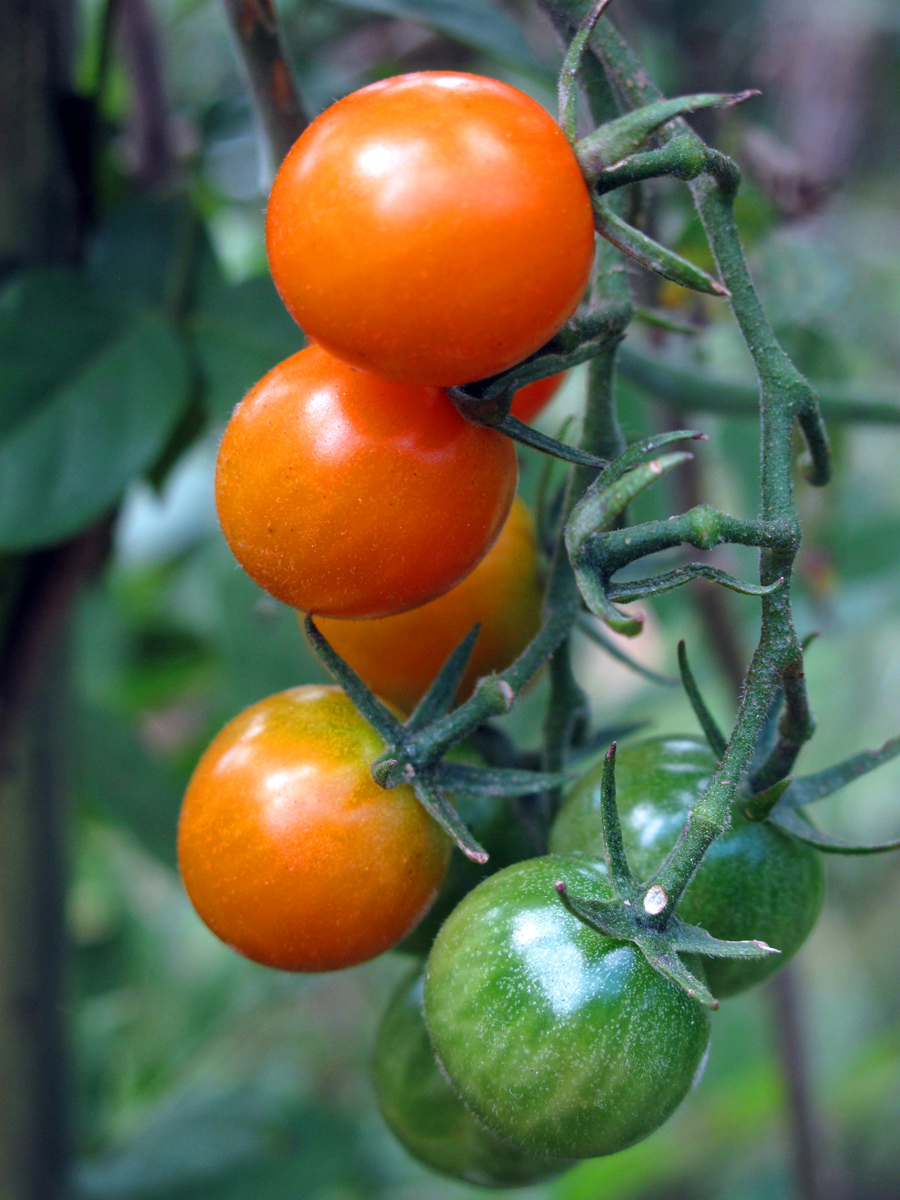Tomatoes are one of the most popular home-grown vegetables. Jane Griffiths has the lowdown on maximising harvests.
The secret to growing tomatoes is to work with nature and to understand what they want and how they grow.
More like How to grow tomatoes: How to grow spinach

Selecting varieties
Tomatoes come in a wide assortment of colours, shapes and sizes, from beefsteak monsters to tiny cherry varieties, from bright red to yellow, green and black. Choose them according to space and preference. Tomatoes are divided into two groups according to growth habit:
Determinate tomatoes are bushy, growing just over a metre tall. They produce all their fruit at about the same time before dying back.
Indeterminate tomatoes have a vining habit, growing up to 6m high, unless pinched back. They continue growing and producing until killed by disease or frost.

The site and soil
Tomatoes love warm weather, and in most of South Africa, are grown in summer. They need a sunny location and fertile, well-drained soil. Incorporate plenty of compost when preparing beds. Good compost ingredients are comfrey and alfalfa as they provide a wide range of nutrients. Before planting, add bonemeal to the planting holes. The increased calcium reduces the chance of blossom-end rot and prevents cutworm damage.
Planting to grow tomatoes
Tomatoes grow easily from seed, and in colder areas, can be started in trays indoors in a sunny north-facing spot. Once the frosts are over, they can be sown in situ. Transplants do best if planted deeper than they were in their trays as this encourages more roots, resulting in larger, healthier plants. Interplant with amaranth, asparagus, basil, chives, garlic, lettuce, marigolds and onions. Avoid planting with any members of the cabbage family or near potatoes.
You might like: Companion planting in the rose garden

Lines of vertical twine are good for indeterminate tomatoes
Supports
Indeterminate tomatoes need strong staking and support, such as a tall tripod or trellis. One of the easiest methods is to install taut vertical lines of twine about 30cm apart. Anchor these firmly to the ground using stakes and attach them to an overhead support (a cross beam or an existing shade cloth roof, for example). Position each plant next to a line, prune it to one central stem and wind it up the twine. Once it reaches the top, break off the growing tip to encourage fruiting. As it becomes heavy with fruit, tie the stems to the support with stretchy ties. Start tying about 20cm above the ground. Form a figure of eight with the stem in one loop and the support in the other. As the plant grows, continue tying at similar intervals.

Cylindrical supports are ideal for determinate tomatoes
Determinate varieties also benefit from caging or staking, which lifts fruit off the ground and provides support. These can be made by creating wire spirals or by bending chicken wire or wire mesh into a cylinder. Whichever system you use, have it in place before transplanting seedlings or sowing seed so you don’t damage the plant’s roots.
Pruning
While this limits the growth of the plant, it encourages more fruit. It also increases airflow, minimising the risk of disease. Basic pruning consists of removing all branches below the fifth or sixth branches using your thumbnail. This prevents soil from splashing onto the plant, reducing the spread of disease.
You might like: Why pruning is a good thing
Indeterminate tomatoes benefit from additional pruning, especially in small gardens. Plants left to ramble without trimming take up far more room and are more prone to disease. Prune by snapping off the suckers (the stems growing at an angle between the main stem and the leaf stem) before they have a chance to develop. Leave two or three vigorous ones to grow until stopped by snapping off the growing tip.
Feeding
Tomatoes are heavy feeders, and in addition to enriching the soil before planting and once flowers start forming, they should be fed with organic potassium-rich fertiliser. Comfrey tea and seaweed foliar spray encourage strong growth and prevent disease.
Watering
Keep plants well-watered during dry weather, especially when setting flowers. Tomatoes prefer to have their roots watered as overhead watering can lead to disease.

To prevent pest attacks, tie muslin bags on fruit when it starts forming
Protecting the fruit
Bagging individual fruit protects against insect and bird damage. The cheapest way to do this is to purchase dozens of little draw-string gift bags available from bulk gift stores. Tie them on as soon as the fruit begins forming. They can be reused each season.

Growing tomatoes in bags is a solution if you’ve had problems with soil disease
Tomatoes are susceptible to various wilts and diseases, many of which are caused by fungi in the soil. Prevent their spread by mulching well with compost and straw, as this also keeps soil moist and smothers weeds. Rotating tomatoes to a different bed each year helps prevent disease. If you don’t have space for this, or if the soil is contaminated, plant them in large grow bags filled with fresh soil.


